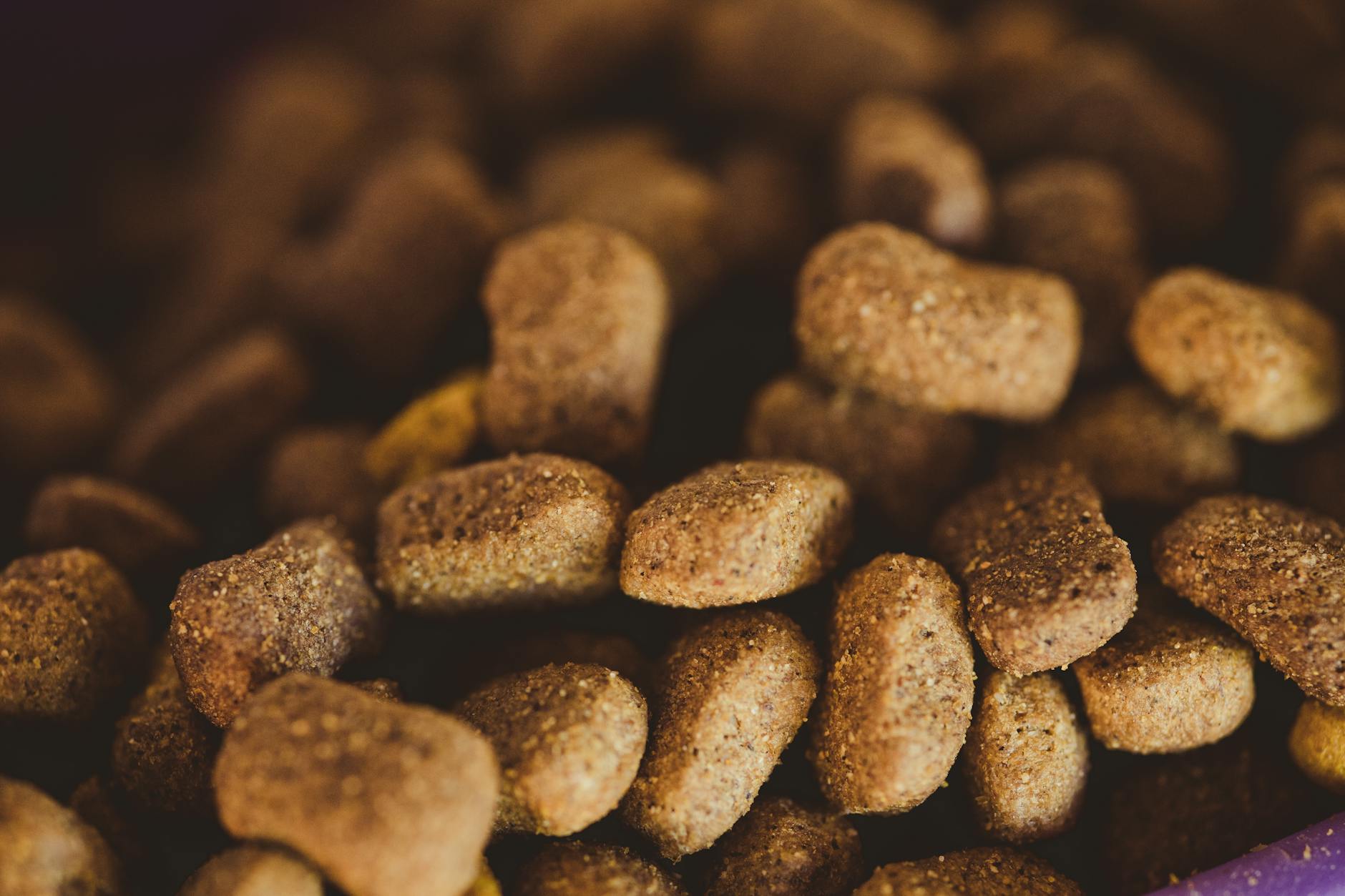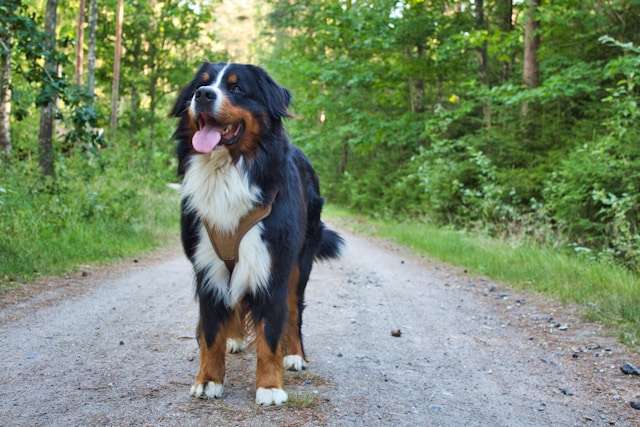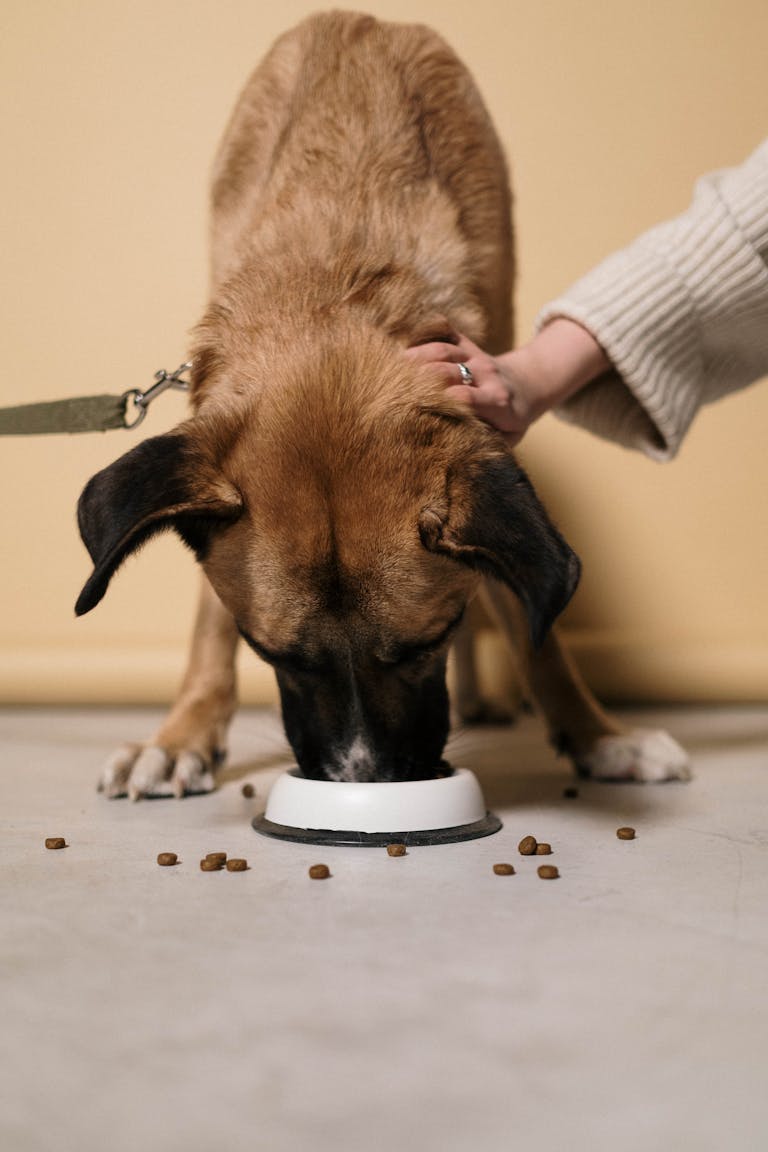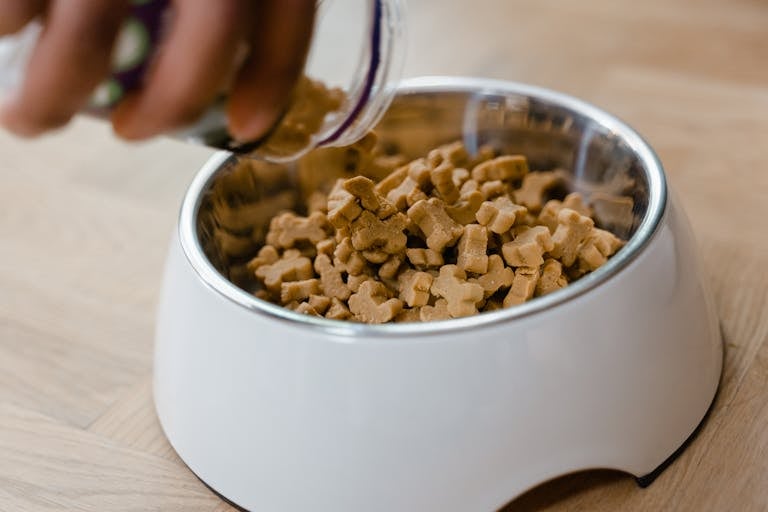Wet Food vs. Dry Kibble: Choosing the Best Dog Food for British Bulldogs

Wet Food vs. Dry Kibble: Choosing the Best Dog Food for British Bulldogs . Finding the best dog food for British Bulldogs is more than picking a random bag off the shelf.
British Bulldogs have unique health needs, and their diet plays a big role in their daily comfort and long-term wellness. The wet food vs. dry kibble debate brings plenty of strong opinions, but each choice has its benefits and drawbacks.
In this guide, I’ll break down the main pros and cons of wet food and dry kibble for British Bulldogs. I’ll also share tips on mixing both types safely, making sure your bulldog gets the nutrition they need. If you’re curious about how your bulldog’s food choice can affect everything from skin health to digestion, you’re in the right place.
Key Takeaways
Choosing between wet food and dry kibble for British Bulldogs feels like a big task, but when you boil it down, you gain a clear sense of what really matters for your dog’s health. Here are the most important points to remember as you decide what sits in your bulldog’s food bowl.
Table of Contents
Wet Food: What Works (and What Doesn’t)
Wet food has a strong following among dog owners with sensitive or picky pups. It’s moist, aromatic, and easy for dogs to chew, which makes it tough to resist for a British Bulldog.
- Pros: Great for hydration, softer texture for sensitive mouths, and a scent that draws in even stubborn eaters.
- Cons: Spoils quickly if left out, can be pricier per serving, and has a shorter shelf life. Wet food may also encourage plaque if left on teeth too long.
Some bulldog owners notice fewer digestive issues when their pups get a mix of wet and dry. It’s all about balance.
Dry Kibble: Reliable and Convenient
 Photo by Rafael Rodrigues
Photo by Rafael Rodrigues
Dry kibble is often seen as the gold standard for daily feeding—and for good reason.
- Pros: Easier to store and measure, helps scrape away plaque, and is budget-friendly. High-quality kibble is often packed with balanced nutrients and designed to support bulldog joints and skin.
- Cons: Less moisture (so hydration becomes even more important), and sometimes challenging for picky eaters or those with dental issues.
Owners who choose kibble often find it blends well with a bulldog’s routine, especially when paired with regular tooth brushing.
Mixing Wet and Dry Foods: Getting the Best of Both Worlds
Many bulldog parents are finding that a mix gets results. Combining both food types can keep your bulldog interested and ensure they get plenty of nutrients plus hydration.
- Lower risk of boredom: Rotating textures keeps meals exciting.
- Supports digestion: Proper mixing makes it easier on sensitive stomachs.
- Customizable nutrition: Owners can adjust to fit their bulldog’s individual needs, whether that means adding moisture or boosting protein.
Stuck on what kibble brands or blending approaches work for Bulldogs? There’s a helpful community of bulldog owners who share their routines on forums like English Bulldog food recommendations.
The Bottom Line for British Bulldog Nutrition
- Bulldogs thrive on consistency. Frequent changes can upset their stomachs, so introduce new foods gradually.
- Quality trumps quantity. The best dog food for British Bulldogs isn’t about filling the bowl—it’s about delivering nutrition tailored for their needs.
- Choosing between wet, dry, or a blend depends on your dog’s health, preferences, and your lifestyle.
For more detailed rankings and reviews, check resources like the Best Dog Food for English Bulldogs 2025 to compare what works best.
Above all, listen to your bulldog. Their coat, energy, waistline, and mood will tell you if you’ve found the right fit. Every British Bulldog is a little different, and their food should be, too.
Understanding British Bulldogs’ Unique Nutritional Needs
 Photo by Andreas Schnabl
Photo by Andreas Schnabl
Every breed has quirks, but when it comes to the best dog food for British Bulldogs, there’s no “one bag fits all.” Bulldogs carry their signature charm in sturdy, blocky frames, but those same features often come with special dietary needs.
If you’ve ever noticed your bulldog’s sensitive tummy or those infamous skin folds, you already know that nutrition isn’t just about filling the bowl—it’s about supporting health, energy, and longevity from the inside out.
Let’s break down why British Bulldogs need a thoughtful approach at mealtime, and what makes their nutritional requirements stand out in the canine world.
Why British Bulldogs Need a Tailored Feeding Plan
British Bulldogs have a reputation for being lovable and low-key, but their bodies require careful attention. They’re prone to certain health issues that directly connect to what lands in their food bowl. Here’s what every bulldog owner needs to keep in mind:
- Short muzzles mean shallow bites: Bulldogs have unique jaw structures, which can make chewing some dry foods tricky. Look for kibbles that are the right size and shape—nothing too big or too hard.
- Slower metabolism: Unlike some brisk, active breeds, Bulldogs are more laid back. This means they burn calories slowly, so it’s easy for them to pack on pounds if you’re not careful with portion sizes.
- Skin and coat concerns: Bulldogs’ adorable wrinkles and folds are prone to irritation and infections if their diet lacks key nutrients like Omega-6 fatty acids and certain vitamins.
- Digestive sensitivity: Many bulldogs experience upset stomachs or gas. High-quality protein, digestible carbs, and a diet low in fillers and unnecessary additives make a real difference.
Key Nutrients That Make a Difference
What goes into the best dog food for British Bulldogs? It’s about finding the right mix of basics and breed-specific needs.
Here’s what matters most for the typical bulldog diet:
- Protein at 18–22%: Bulldogs thrive on moderate to high protein levels, which help maintain their muscle while keeping them full between meals.
- Fat at 5–10%: Because of their body structure and slower activity, Bulldogs don’t need too much fat. The right amount keeps their weight steady and their skin healthy.
- Fiber and digestible carbs: Gentle fiber helps keep things moving and supports good digestion.
- Essential fatty acids: These help protect their skin and reduce problems in the famous bulldog folds.
For a more technical breakdown, the Best Dog Food for Bulldog: A Comprehensive Nutritional Guide provides an in-depth look at the exact protein, fat, and fiber requirements by age and activity level.
Common Health Concerns That Relate to Diet
You want happy, healthy bulldog years—not trips to the vet for recurring issues. Bulldogs can develop certain health problems, many of which can be managed (or even prevented) through the right diet:
- Weight gain: Their laid-back nature puts bulldogs at risk of obesity, which piles extra pressure on their joints.
- Skin fold infections: The wrong diet can trigger or worsen skin irritation. Foods rich in Omega-6 and Omega-3 fatty acids—plus proper hydration—protect their skin.
- Dental trouble: The breed’s jaw structure often means more plaque and tartar. This is where texture—whether it’s crunchy kibble or a mixed meal—matters as much as nutrients.
- Food sensitivities: Bulldogs are known for sensitive guts. A diet that’s free from unnecessary artificial additives and easy to digest is the way to go.
Puppy vs. Adult Bulldog Nutrition
Bulldog puppies and adults don’t share the same mealtime needs. Puppies need more calories for growth, but with the same care for skin, digestion, and healthy joints. To set the stage for a healthy life, refer to the Puppy Nutrition Guide for a foundation in nutrition that applies across all breeds.
For even more detail, the puppy feeding chart and guide from Purina can help you figure out serving sizes and meal routines during those all-important early months.
Why Individual Bulldogs May Need Extra Tweaks
Every bulldog is special, and sometimes, what works for one won’t work for another. Lifestyle, allergies, medical history, and even your local climate can shift what food works best.
If your bulldog is showing signs of food intolerance—like itching, paw chewing, or excess gas—it’s worth talking to your vet about a food change or even considering a blended diet of both wet and dry varieties.
Feeding your bulldog is more than a routine—it’s a daily opportunity to support their health, happiness, and playful spirit. Pay attention to their signals, start with a strong nutritional foundation, and adjust as needed for a bulldog that’s as comfortable as they are cute.
Wet Food vs. Dry Kibble: A Detailed Comparison for British Bulldogs
Choosing the best dog food for British Bulldogs means understanding how wet food and dry kibble affect their health. Bulldogs have their own set of quirks—stubborn appetites, sensitive tummies, joint issues, and snub-nosed faces—which makes this decision important.
Here I’ll lay out how each option measures up to bulldog needs, touching on taste, dental care, weight, and more, so you can confidently pick what fits your bulldog best.
Benefits of Wet Food for British Bulldogs
Wet food brings a lot to the table, especially for bulldogs who turn up their noses at plain kibble or struggle with chewing. These features often make it a favorite:
- Palatability: The aroma and meaty texture can tempt even stubborn bulldogs to finish their meal. Wet food is known for enticing picky eaters, which many bulldog owners face.
- Hydration Support: Wet food has a high moisture content (often around 70-80%), offering a hydration boost. This helps bulldogs, who may not drink enough water on their own, keep their skin and folds healthy while supporting kidney function.
- Gentle on Sensitive Mouths: Bulldogs with dental issues, sore gums, or jaw misalignments sometimes struggle with hard kibble. Wet food’s soft consistency is easy to chew and swallow, minimizing discomfort.
- Reduced Digestive Upset: Some bulldogs with sensitive stomachs may find canned formulas easier to digest, thanks to fewer fillers and a gentler texture.
Curious what top bulldog owners use? Some share their picks and feeding routines in forums like wet food suggestions for English Bulldogs, with real feedback on what’s working for appetite, skin, and tummy.
Drawbacks of Wet Food for British Bulldogs
While wet food solves some problems, it creates others. Here are the main drawbacks to consider if you’re thinking about switching or adding more cans to your routine:
- Higher Cost per Meal: Wet food tends to be more expensive on a per-serving basis, especially when feeding medium-sized breeds like bulldogs.
- Spoilage and Storage: Opened cans need refrigeration, and food left out can spoil quickly. This means less flexibility if your dog grazes during the day.
- Dental Health Concerns: While wet food is easy on the mouth, it doesn’t provide the abrasive action needed to help keep teeth clean. Plaque may build up faster, so you might need to prioritize dental chews or brushing.
- Mess Factor: Bulldogs aren’t always neat eaters. Wet food can stick to their jowls and folds, which could lead to extra cleaning and increase the risk of skin irritation.
- Bulkier Storage: Cans take up more space, whether you’re storing them unopened or in the fridge after opening.
If you’re aiming for the highest-quality wet dog food, look for options with real meat, limited additives, and clear serving instructions.
Brands focused on sustainability and fewer artificial ingredients, like some highlighted in healthy wet dog food collections, can be safer bets for bulldogs with sensitive systems.
Advantages of Dry Kibble for British Bulldogs
 Photo by MART PRODUCTION
Photo by MART PRODUCTION
Dry kibble is the classic choice for a reason. For British Bulldogs, its benefits reach past just convenience:
- Dental Support: Crunchy kibble scrapes at the teeth, reducing tartar buildup and slowing down plaque. Since bulldogs often battle dental woes due to their unique mouth shape, this is a big plus.
- Longer Shelf Life: Kibble is easy to store and won’t spoil quickly once opened, perfect if your bulldog isn’t a speedy eater.
- Easy Measuring and Portion Control: It’s much simpler to count calories and control portions with dry kibble, which helps combat the breed’s risk of obesity.
- Cost-Effectiveness: Generally, kibbles cost less per serving and are readily available in different formulations, including those made just for sensitive bulldog stomachs.
- Less Mess: Dry food keeps cleanup simple, both for your dog and their feeding area.
The best dry kibble for British Bulldogs is made with real animal protein as the main ingredient, whole grains or easily digested carbs, and added nutrients for joint and skin health. Bulldogs benefit from formulas tailored to their breed, often found on review sites or in English Bulldog food recommendations.
Potential Downsides of Dry Kibble for British Bulldogs
No food is perfect, and dry kibble brings its own set of challenges, especially if you go for lower-quality brands:
- Low Moisture Content: Kibble is low in water, which can leave some bulldogs slightly dehydrated—especially if they’re not big on drinking.
- Can Be Hard to Chew: Bulldogs with dental issues or senior dogs may have trouble crunching large, hard kibbles, which can lead to skipped meals.
- Pickiness: Some bulldogs just aren’t into plain kibble. If your pup hesitates at each meal, kibble alone might not provide enough motivation.
- Processed Additives: Not all kibble is created equal. Some cheaper options pack in unnecessary fillers, artificial colors, and preservatives that can trigger allergies or upset a sensitive gut.
- Weight Management Issues: Overfeeding is easy with free-choice kibble, so measuring each meal is a must.
To lower these risks, always select food made without questionable additives and consider mixing in a little wet food to boost flavor and hydration if needed. If you want a deeper understanding of what goes into bulldog-friendly blends, check the Best Dog Food for English Bulldogs 2025 for protein source comparisons and expert recommendations.
Being thoughtful about what lands in your British Bulldog’s bowl means putting health, taste, and practicality front and center. Mixing quality wet and dry foods—or picking the right one for your dog’s mouth, skin, and energy—keeps Bulldogs happy and thriving. To explore more about balanced feeding strategies and other breed needs, you can dive into articles like the puppy nutrition guide for foundational tips that work at every age.
Mixing Wet and Dry Food: Tips for Optimal Bulldog Nutrition
If you’ve felt unsure about serving only wet food or dry kibble, you aren’t alone. Many British Bulldog owners hit the sweet spot by blending both. Mixing wet and dry food can help your dog enjoy better taste, easier chewing, and a broader range of nutrients. This approach can also help picky eaters or those sensitive to changes, all while promoting healthy hydration and balanced meals.
Blending means you get the hydration and soft texture of wet food, with the dental benefits and easy portioning of kibble. I’ll walk you through how to mix these two food types for your bulldog’s best diet, step by step.
Why Mix Wet and Dry Food for Bulldogs?
Combining wet and dry food appeals to both your bulldog’s taste buds and their health needs. Bulldogs tend to have sensitive stomachs and are quick to get bored with their food. By providing both flavors and textures, you keep their interest while supporting skin, joints, and digestion.
Some key reasons to mix:
- Adds moisture: Bulldogs aren’t always great at drinking water. Mixing in wet food helps with daily hydration.
- Eases chewing: Some bulldogs have trouble with hard kibble. Wet food softens the mix and is gentler on the mouth.
- Boosts nutrition: You can pair high-quality kibble with a protein-rich wet food to ensure complete nutrition.
- Makes meals more exciting: Bulldogs who ignore their bowl may become eager eaters with a flavorful blend.
How to Mix Wet and Dry Food Properly
 Photo by MART PRODUCTION
Photo by MART PRODUCTION
The key to mixing is balance—not just for taste, but for calories and nutrition. Here’s a simple way to start:
- Pick Quality Foods: Before mixing, make sure you are choosing the best dog food for British Bulldogs with premium ingredients and no artificial fillers. Look for foods with real meat, digestible grains, and added nutrients for skin and joints.
- Start with Ratios: A typical starting point is 50% dry, 50% wet food. You can adjust based on your bulldog’s preferences and health needs. Some owners use 75% kibble and 25% wet food for easier transition and less mess.
- Keep Each Meal Consistent: Stick to a set ratio at each feeding to avoid stomach upsets. Bulldogs need stability in their diets.
- Mix Right Before Serving: Blend the wet and dry food just before your bulldog eats. This keeps it fresh, reduces spoilage, and ensures the right texture.
- Watch Portion Sizes: Wet food adds calories and moisture, so scale back if you notice weight changes. Bulldogs are prone to gaining pounds quickly.
Transitioning Your Bulldog to a Mixed Diet
A slow transition keeps your bulldog’s digestion calm and steady. Abrupt changes can upset even the happiest of bellies. Here’s how you can make the switch:
- Start Small: In the first week, blend just a spoonful of wet food into kibble. Over 7–10 days, slowly increase the wet food until you reach your preferred balance.
- Monitor Digestion: Look out for loose stools, vomiting, or signs of stomach discomfort. If you see problems, slow the transition or drop back on wet food amounts for a few days.
- Consistency Matters: Feed at the same times each day and keep the ratios consistent. Bulldogs need routine to thrive.
Serving and Storage Tips
Keeping meals safe and tasty is easy with a little planning:
- Store Opened Wet Food: Keep cans covered and refrigerated after opening. Use within three days for freshness.
- Portion Carefully: Use a measuring cup for kibble and a spoon for wet food. Avoid overfeeding by checking serving sizes.
- Feed Soon After Mixing: Mix only what your bulldog will eat in one meal. Leftovers don’t keep well once blended.
Monitoring Your Bulldog’s Health and Adjusting
Mixing wet and dry food works best when you keep a close eye on how your bulldog responds. Every dog is different, and finding the best blend may take a few tries.
Watch for:
- Healthier stool: Firm, regular bowel movements are a good sign.
- Shiny coat: Improved nutrition (especially more hydration) often makes for healthier skin and fur.
- Stable weight: Bulldogs should have a clear waistline and not strain to move.
- Visible enjoyment: Eagerness at mealtime shows you’re on the right track.
If you notice any troubles—such as itching, foot licking, or digestive discomfort—it might mean more tweaking is needed. Sometimes, sensitivities develop with new ingredients or mixes. Talk to your vet before making major changes, and always prioritize your bulldog’s comfort and health.
Professional Guidance: Always Talk to Your Vet
Before you make lasting changes to your bulldog’s diet, reach out to your veterinarian. They can offer advice tailored to your dog’s age, current health, and any allergies or sensitivities.
Bulldogs have special nutritional needs, so getting an expert’s input can set you up for success and prevent avoidable health problems.
Looking for more guidance? Articles like the puppy nutrition guide cover balanced feeding for all breeds and ages. If you want more practical advice, check out dog nutrition advice for bully breeds for breed-specific tips that often overlap with bulldog needs.
Mixing wet and dry foods is a flexible, rewarding option for the best dog food for British Bulldogs. With the right approach, you can keep your bulldog excited, nourished, and thriving, one meal at a time.
Frequently Asked Questions: Wet Food vs. Dry Kibble for British Bulldogs
Navigating the best dog food for British Bulldogs brings up plenty of questions. Each dog has its quirks, and pet owners want clear answers before making changes to their bulldog’s diet.
In this section, I’m tackling the top concerns dog owners share about feeding wet food, dry kibble, and combinations—so you can make confident decisions for your furry companion.
Can I Mix Wet Food and Dry Kibble Every Day?
Yes, most British Bulldogs thrive when you offer a balanced mix of wet food and dry kibble daily. Mixing helps target hydration, taste, and texture, which keeps your bulldog interested in every meal. Plus, daily mixing can support digestion and provide a more complete nutrient profile.
If you choose to mix, keep the ratio steady for each meal and monitor your bulldog’s weight and stool for changes. Bulldogs do best with a set routine, so find a blend that works and stick with it.
Is Wet Food or Dry Kibble Better for Bulldogs with Food Allergies?
Wet food can sometimes be gentler for dogs with certain food allergies or sensitivities. That’s because wet formulas often have fewer synthetic additives and a shorter ingredient list. However, some high-quality dry kibbles use limited ingredients and are tailored for sensitive stomachs.
Whichever you try, always introduce new foods slowly and look for clear signs, like less itching or fewer digestive problems. For more tips on managing sensitive tummies, the Puppy Nutrition Guide has helpful advice that applies even to adult bulldogs.
How Do I Know If My Bulldog Likes Their Food Mix?
Your bulldog will show you in several ways:
- They eat eagerly at each meal and finish their portion.
- Their coat looks healthy and shiny.
- They maintain good energy levels and healthy bathroom habits.
- No signs of stomach upset or skin itching.
If your bulldog turns away, leaves food in the bowl, or starts itching more than usual, consider tweaking the mix or ingredients. Bulldogs can be stubborn eaters, so stay observant.
Will Mixing Wet and Dry Food Affect My Bulldog’s Dental Health?
Dry kibble helps scrape away plaque and may slow tartar build-up, which is important for bulldogs with crowded teeth. But wet food is softer and doesn’t offer the same cleaning action. Mixing the two can support both hydration and some dental care, but it’s still smart to brush your bulldog’s teeth or give dental chews regularly.
If dental issues are persistent, consider feeding mainly kibble or speak with your vet about other dental health solutions. For Bulldogs, teeth and gum care can be just as important as what’s in their bowl.
Does Wet Food Make Bulldogs Gain Weight?
Wet food is typically higher in water but can also be higher in fat and calories per serving, depending on the formula. Since British Bulldogs are prone to weight gain, always check the serving size and use a measuring spoon.
Mixing with kibble can help control calories, as long as you adjust portions accordingly. If you see your bulldog’s waistline disappearing or you notice lethargy, scale back on portions and speak to your vet for more guidance.
If you need help managing weight and understanding portion control, you might find helpful information in a guide on dog nutrition advice for bully breeds.
What Are Signs My Bulldog Isn’t Tolerating a New Food?
The best dog food for British Bulldogs is one that leaves them happy and free of discomfort. If your bulldog has trouble with a new mix, you’ll likely see:
- Loose stools or diarrhea
- Vomiting or lack of appetite
- Excessive itching, chewing paws, or ear infections
- Lethargy or sudden disinterest in meals
These warning signs usually show up soon after a diet change. Go slow and, if problems continue, revisit the ingredient list or consult your veterinarian.
How Often Should I Change My Bulldog’s Food?
Bulldogs do best with consistency. Change food types or brands only when necessary—such as ingredient updates, food recalls, or new health concerns.
Always transition slowly over 7-10 days. Quick changes can upset sensitive stomachs and trigger allergies. When you do transition, start by mixing a little of the new food with the current one and gradually shift the balance to avoid stomach upset.
Are Breed-Specific Dog Foods Worth It for British Bulldogs?
Breed-specific dog foods often target common bulldog needs, like skin and joint health, digestive support, and size-appropriate kibble. While not required, these formulas can be a convenient option, especially if your bulldog struggles with common breed health issues. Still, the main focus should always be on natural ingredients, balanced nutrition, and your dog’s individual needs.
Should I Add Toppers or Fresh Food to My Bulldog’s Meals?
Toppers, like lean cooked meat or vegetables, can add excitement to meals. Just remember to avoid anything toxic to dogs (like onions, garlic, chocolate, or grapes). Any additions should make up less than 10% of your bulldog’s total diet to maintain nutritional balance.
For those considering a deeper look at nutrients and healthy extras, the article on the benefits of dietary supplements for dogs on VCA Animal Hospitals explains which options are safe.
Are There Special Considerations for Senior Bulldogs?
Yes. Senior British Bulldogs often need food with fewer calories and more joint support. Wet food may help if dental problems arise, while small-bite kibble can be an option for those still able to chew easily. Keep a close watch on their energy, weight, and any changes in mobility.
Regular vet visits become even more important as bulldogs age to catch issues early and adjust their diet as needed.
Understanding the ins and outs of the best dog food for British Bulldogs helps you make smart choices for your dog’s health and happiness.
Keep watching for updates on your dog’s mood, appearance, and digestion—they’re the best signals you have that what’s in the bowl is working.
Conclusion
Feeding a British Bulldog is about understanding what keeps them happiest and healthiest. Both wet food and dry kibble have their place, and many bulldogs do best with a blend tailored to their needs.
The goal is to choose the best dog food for British Bulldogs that supports easy digestion, healthy skin, and steady energy—while fitting your dog’s age, health, and personality.
Keep a watchful eye on how your bulldog responds to any diet changes, and never hesitate to reach out to your vet for more personalized advice.
For readers wanting even deeper insight on feeding bully breeds, I recommend exploring the site’s detailed dog nutrition advice for American Bully puppies, which offers extra guidance that often applies to bulldogs too.
Thank you for following along and giving your bulldog the thoughtful care they deserve. If you’ve landed on a meal plan that works well, share your tips with fellow bulldog owners—real stories help everyone find the right fit.







There is definately a lot to find out about this subject. I like all the points you made